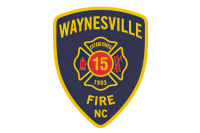Admiration, maybe, but no love for the boar
Numerous non-native plants have been introduced into the southern mountains during the last century or so. Many are now classified by wildlife biologists as “exotic pests.” Few would argue that kudzu does not fall into this category. And without doubt, the most notable alien mammal ever introduced into this immediate region was the European wild boar.
There are friends of the wild boar — mostly hunters — who believe that the animal’s outstanding qualities as a game animal outweigh its negative qualities. Then there are those who have observed its capacity to devastate large areas who think otherwise.
I used to be a friend of the wild boar. Its survival instincts and ability to adapt to truly rugged mountain terrain seemed to me to be admirable traits in any animal. In recent years, however, after some up close and personal encounters, I’ve changed my mind. More about that later.
A 29-page pamphlet by Perry Jones entitled “The European Wild Boar in North Carolina” (North Carolina Wildlife Resources Commission, 1959) tells the story of how the animal arrived and subsequently flourished in this region of the world. In 1908, the Whiting Manufacturing Co., an English concern, purchased Hooper Bald and adjoining lands near Robbinsville in Graham County. George Gordon Moore, an adviser to English investors, was allowed to establish a 1,600-acre game preserve on Hooper Bald in return for assisting the company with floating a loan of $2 million. Beginning in 1912, the preserve was stocked with 8 buffaloes, 14 elk, 6 Colorado mule deer, 34 bears (9 of which were Russian brown bears), 200 wild turkeys, 10,000 English ring-neck pheasant eggs, and 13 wild boar. For good measure, Moore also purchased 150 sheep and 150 turkeys locally.
“Almost immediately,” Jones writes, “blows of adversity began to strike the preserve. Some of the big bears promptly climbed out of the wire stockade, and since several of them had come from zoos, they would proceed to the clubhouse for food. The thought of a large bear appearing at any moment made sleeping extremely difficult. In order to return a bear to the lot, two men would have to lasso each of his front feet, pull him around a tree, and securely bind both pairs of feet together on the opposite side of the tree. Next, a pole was placed across the back of his neck, and his chin was pushed up firmly against the tree. While two men would hold this pole, another would put a collar securely around the bear’s neck. Two chains were then snapped on the collar. The pole and ropes were then removed, the bear was ‘collared,’ and the two men at the extreme end of the chain would hold the bear off each other. This procedure was described as ‘spread-eagling’ a bear.” So, there you go. Next time you need to deal with a bear you know exactly what to do — “spread-eagle” the varmint.
“The bear quickly fell prey to sharpshooting mountaineers,” Jones writes, and all the other animals rather quickly faded away in an environment they couldn’t cope with — all, that is but the wild boar. Area residents have long referred to the wild boar as the Russian (or “Roossian”) wild boar, but Jones speculates that they actually came from Germany. At any rate, they were the only ones to escape from the preserve and survive in the surrounding mountains.
Related Items
“One source states that the wild boar were capable of sticking their legs between the rails of their pen and actually climbing over the fence,” Jones writes. “It seems likely, however, that the majority of them chose to remain within the enclosure where they were allowed to reproduce unmolested for a period of eight to ten years.” In the early 1920s, Moore’s foreman, Cotton McGuire, a Graham County resident who provided most of the information Jones collected, “invited some of his friends who owned packs of dogs up to the Bald for a grand hog hunt. This hunt was conducted within the boar lot, and by this time the boar had increased to an estimated herd of between 60 and 100. The Russian boar, however, turned out to be more than the hunters or dogs bargained for. Only two boar were killed, and at least a dozen dogs were killed, or severely maimed. Some of the hunters were forced to take refuge in trees to escape the charging beasts. Overly excited by the baying of dogs and shouts of hunters, the boar simply tore their way through the fence and escaped into the nearby mountains.”
Established in 1934, the 520,000-acre Great Smoky Mountains National Park has become their prime sanctuary despite extended shooting and trapping campaigns by the park service to eradicate them because of their destructive habits. A mature animal can attain a height of over three feet at the shoulder and a weight of over 400 pounds. The average weight, however, is probably less than half that. Ranging widely in herds, they are omnivorous, feeding on plant matter and small animals. The head of the wild boar is wedge shaped with a pointed snout, which enables it to root up the ground seeking underground tubers in search of food. According to Jones, “their menu also includes acorns ... grains, fruits, birds’ eggs, mice, carrion, and salamanders. During the spring and early summer, chick grouse and green corn ... are also included in the diet. The imported boars seem particularly to relish rattlesnakes, which they kill with their sharp-edged hooves ... Alone or in herds, a boar may travel up to 12 miles during one feeding period.”
Troy Hyde, a veteran Graham County hunter, told Jones that one could “root up concrete, if he put his mind to it.” That sounds like exaggeration until you see areas where they have been rooting. The first time I encountered such an area I momentarily wondered what fool had been rototilling in the national park. Then the hog smell betrayed the culprits’ identities. I was astonished at the extent of damage. But just how destructive they can be didn’t really hit home until several years ago when they came onto our property — which adjoins the national park in Swain County three miles northwest of Bryson City — and went to work digging up the richest wildflower area we have. (They especially love the tubers of the showy spring species: bloodroot, trillium, rue anemone, blue cohosh, trout lily, etc.) When we returned home after an extended absence, my first thought once again was that some fool had rototilled the slope behind the house. Then I smelled that smell and saw the hog tracks. At that time we had to temporarily discontinue using our gravity-flow water system because the critters decided to root and wallow in the watershed up on the ridge above the house.
North Carolina wildlife officers issued us an out-of-season hunting permit to help remedy the problem. But I didn’t have enough firepower to make a stand. The pellets from my 12-gauge shotgun would have only tickled a boar’s funny bone. (Wild boars have funny bones don’t they?) Anyway, I never fired a shot. After awhile, they upped and left on their own. Good riddance, we thought. Alas, they returned again last fall while Elizabeth and I were away for a week. This time they attacked a partly buried rock wall above the house. This 60-foot long wall had been built in the early part of the 20th century by a farmer clearing the hillside to plant corn. We suppose there was something living in or under the wall that the wild boar craved. We haven’t gotten around to clearing up the mess to this day. The hillside looks like several grenades had been detonated under the wall, throwing rock debris helter-skelter.
Wild boars are independent cusses that have made the transition from one continent to another with admirable ease. They didn’t asked to be hauled from Europe to Graham County, but they’ve made a go of it without any whining or bellyaching. That’s admirable. But you can’t really be the friend of an animal that pollutes your water supply and uproots rock walls on your property. Can you? Even kudzu doesn’t do that.
George Ellison wrote the biographical introductions for the reissues of two Appalachian classics: Horace Kephart’s Our Southern Highlanders and James Mooney’s History, Myths, and Sacred Formulas of the Cherokees. In June 2005, a selection of his Back Then columns was published by The History Press in Charleston as Mountain Passages: Natural and Cultural History of Western North Carolina and the Great Smoky Mountains. Readers can contact him at P.O. Box 1262, Bryson City, N.C., 28713, or at This email address is being protected from spambots. You need JavaScript enabled to view it..









